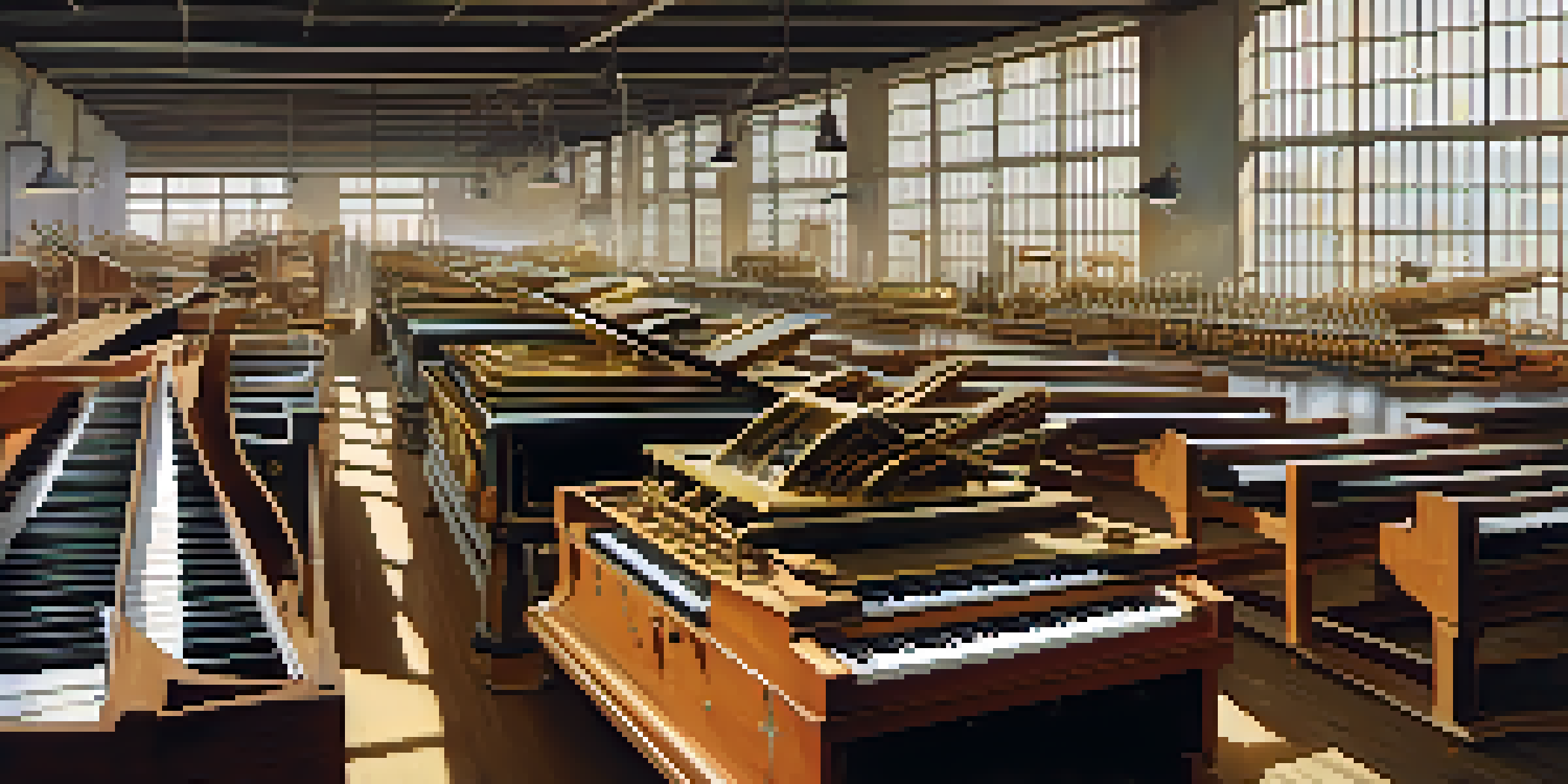The Impact of the Industrial Revolution on Music Production

The Birth of Mass-Produced Instruments
The Industrial Revolution marked a turning point in instrument production, moving from handcrafted pieces to mass-produced ones. This shift allowed for greater accessibility, so more people could afford musical instruments, fostering a diverse range of musicians and styles. Factories began to utilize machinery, which improved the consistency and quality of instruments, such as pianos and brass instruments. As a result, music became more accessible to the public, laying the groundwork for various musical movements.
Innovations in Sound Recording
Before the Industrial Revolution, capturing sound was a nearly impossible feat. However, with advancements like the phonograph and later, the gramophone, music could be recorded and reproduced for the first time. These innovations transformed how people consumed music, enabling them to enjoy performances in their homes rather than just in live settings. The ability to record music also opened the door for artists to share their work with a broader audience than ever before.
Mass Production Made Music Accessible
The shift to mass-produced instruments during the Industrial Revolution democratized music, allowing a broader range of musicians to emerge.
The Rise of Sheet Music Publishing
With the advent of the Industrial Revolution, printing techniques evolved, leading to a boom in sheet music publishing. This allowed composers to distribute their work widely, reaching new audiences and creating a demand for popular songs. The accessibility of sheet music encouraged amateur musicians to learn and perform, further embedding music into everyday life. It also sparked a competitive market for popular songs, paving the way for the music industry as we know it today.
The Influence of New Musical Genres
As industrialization progressed, new musical genres began to emerge, reflecting the changing social landscape. Jazz, blues, and eventually rock and roll were born out of the industrial cities where diverse cultures intersected. These genres represented not just musical innovation but also the struggles and triumphs of the working class. The rise of these styles showcased how music could serve as both a form of expression and a means of social commentary.
Technological Advances Transformed Music
Innovations in sound recording and performance technology revolutionized how music was consumed and experienced, paving the way for modern live performances.
The Development of Music Education
With the increased availability of instruments and sheet music, music education also flourished during this period. Schools began to incorporate music into their curricula, offering lessons on various instruments and music theory. This formal education helped cultivate a new generation of skilled musicians and composers, who brought fresh ideas to the music scene. The emphasis on music education contributed to a richer cultural landscape, as communities began to value the arts.
The Impact of Technology on Performance
The Industrial Revolution brought about not just instruments but also advancements in performance technology. Innovations such as electricity led to the creation of electric instruments and amplifiers, dramatically changing how music was performed and experienced. Concerts became more dynamic and engaging as artists could reach larger audiences with amplified sound. This technological evolution set the stage for the vibrant live music scene we see today.
Globalization Enriched Musical Styles
Improved transportation and communication facilitated cultural exchange, leading to the globalization of music and the blending of diverse genres.
Cultural Exchange and Music Globalization
Industrialization also fostered greater cultural exchange, as transportation and communication improved. Musicians began to share their styles and techniques across borders, leading to the globalization of music. This cross-pollination enriched musical genres, blending traditional forms with contemporary influences. The result was a more interconnected musical world, where artists could collaborate and innovate like never before.
Lasting Legacy of the Industrial Revolution on Music
The impact of the Industrial Revolution on music production is profound and lasting. It democratized music-making, allowing more voices to be heard and creating a vibrant tapestry of genres. Today's music landscape owes much to the innovations and changes that occurred during this transformative period. As we look back, we can appreciate how the rhythm of the Industrial Revolution still resonates in the music we create and enjoy today.